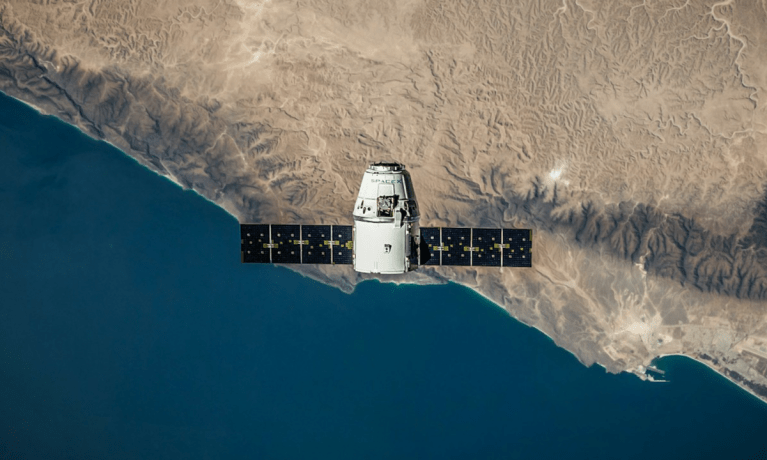
Access to the connected economy is the first step in contributing to it.
And with the news last week that Starlink, a subsidiary of Elon Musk’s SpaceX, has launched a new, low-cost WiFi satellite, there’s a growing impact that Low Earth Orbit (LEO) satellites — and the digitally connected LEO economy more broadly — could have on payments and global money movement.
“This product will change the world,” Space X CEO Elon Musk posted on X, formerly Twitter.
I just set it up right now and am writing this post through space.
Took less than 5 mins. Easily carried in a backpack.
This product will change the world.
— Elon Musk (@elonmusk) June 17, 2024
That’s because Musk and other industry observers believe that the introduction of LEO satellite connectivity for global money movement has the potential to enhance financial inclusion, improve transaction efficiency, reduce costs and increase the resilience of financial systems, particularly in underserved and remote regions, and especially as it relates to cross-border payments.
These satellites, orbiting at altitudes ranging from 180 to 2,000 kilometers above the Earth’s surface, can offer a range of benefits in an era where digital connectivity is paramount.
After all, it takes just two steps to set up a satellite connectivity via a Starlink Mini: 1. Plug it in; 2. Point at sky. “Instructions work in either order,” noted the company.
Read more: Why the Connected Economy Isn’t
One of the most profound impacts of LEO satellites is their ability to provide reliable internet connectivity to remote and underserved regions. Traditional terrestrial networks often fail to reach these areas due to geographical challenges and high infrastructure costs. However, LEO satellites can blanket the globe with high-speed internet, ensuring that even the most isolated communities are connected.
This improved connectivity is a game-changer for financial inclusion. In regions where banking infrastructure is sparse, LEO satellites enable access to digital financial services. Residents in these areas can now open bank accounts, make digital payments and participate in the global economy without having to travel long distances to access physical banking facilities.
By bridging the connectivity gap, LEO satellites have the potential to foster economic growth and inclusion around the world.
At the same time, speed and reliability are critical in the world of financial transactions. Traditional satellite communication systems, often positioned in geostationary orbit, suffer from latency issues due to their high altitude. In contrast, LEO satellites operate much closer to the Earth, significantly reducing latency and improving the speed of data transmission.
The level of data-driven product and service innovation remains elevated and is building to new experiences, MongoDB Chief Product Officer Sahir Azam told PYMNTS.
“The typical geographic boundaries or physical boundaries are going away, and you can create these rich ecosystems,” he added.
This reduction in latency is particularly beneficial for international money transfers, which are often hampered by slow and unreliable networks. With LEO satellites, cross-border transactions can be completed more swiftly, ensuring that funds reach their intended recipients without unnecessary delays. This is crucial for businesses that rely on timely payments to maintain cash flow and for individuals who depend on remittances from family members working abroad.
Read more: Amazon’s Space Lasers Redefine Global Data Connectivity
In an age where cybersecurity threats are a growing concern, the security of financial transactions is paramount. LEO satellite networks offer a secure method of transmitting financial data, reducing the risk of interception or tampering compared to some terrestrial networks. These satellites use advanced encryption technologies to protect data, ensuring that financial information remains confidential and secure — something particularly vital for financial transactions involving large sums or confidential business information.
PYMNTS Intelligence has been tracking the shift to digital, worldwide, across 37 distinct activities since March of 2020, consistently finding that connected devices and technology have shortened the distance between the customer and a business.
And on Wednesday (June 26), PYMNTS Intelligence will release the latest results of a landmark global benchmarking of the digital engagement of consumers living in 11 countries that represent 50% of the global GDP. The upcoming “How the World Does Digital” report includes the U.S. and the U.K.; the five largest EU countries — France, Germany, Italy, Netherlands, and Spain — and Australia, Japan and Singapore in the Asia Pacific.
One of the big takeaways from the report is the huge potential for embedding digital into the day-to-day routine activities of consumers regardless of where they live — including the once-isolated parts of the world. With connection comes innovation and the opportunity to expand people’s economic wellbeing.
Still, as PYMNTS CEO Karen Webster has written, “truly making the physical world a contextual part of a digital experience remains largely untapped. Too much of the digital transformation to this point is digital — but not exactly transformational.”